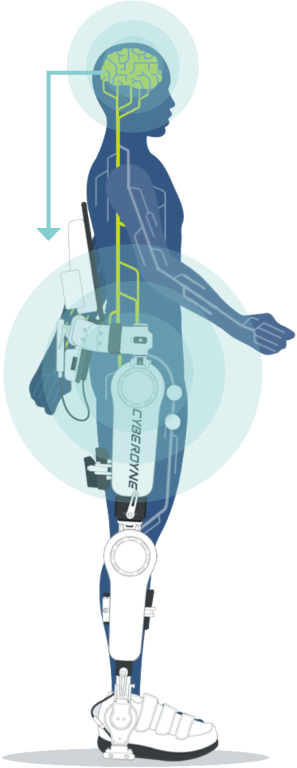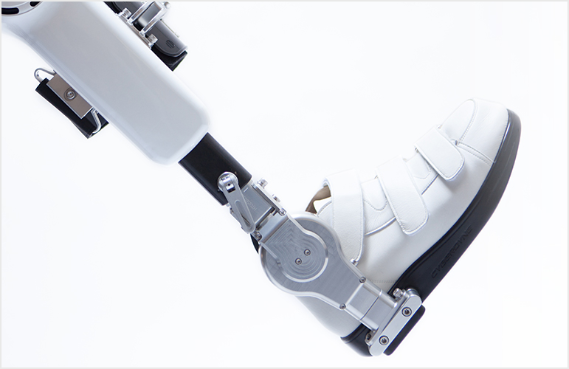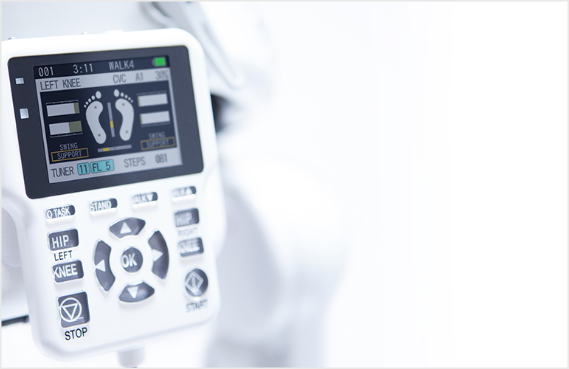How HAL Lower Limb Works
Our intention to move our legs triggers bio-electric signals (BES) from the brain that communicate with the muscles that make locomotion possible.
Such signals from paralyzed patients may be too weak to trigger proper movement. However, HAL can sensor faint BES that trickle onto the skin, process it, and simultaneously assist one’s desired movement with motors located on each hip and knee joint.
More importantly, the brain receives feedback from the target muscle through the sensory system and learns how to move legs correctly after repetition of dedicated HAL gait training. HAL research shows significant improvement in walking speed for patients with spinal cord injuries after therapy with the device.
How HAL Lower Limb Works


The brain sends command signals. When a person tries to move their body, the brain transmits necessary signals through the nerves to the muscles.


The muscles receive the command signals. Each muscle contracts to move its corresponding joint when it receives the appropriate command signal sent from the brain through the nerves. With a spinal cord injury, this pathway is disrupted and the signal is too weak to generate sufficient force.


HAL reads the signals. Signals sent to the muscles by the brain trickle onto the skin surface as very faint bio-electrical signals (BES). HAL uses sensors placed on the surface of the skin to detect these BES and recognizes the kind of joint movement the wearer intended.


HAL moves as the wearer intends. HAL controls the power units at each joint based on these BES and allows the wearer to perform the desired movements with their voluntary commands.


Information of movement is sent back to the brain. When HAL has appropriately assisted the intended movement, the feeling is fed back to the brain. Active use of these neural pathways for voluntary movement with physical feedback to the brain leads to an improved ability for the wearer to walk on their own.
Think, Send, Read, Move—HAL
Put your thoughts into action, with Cyberdyne.